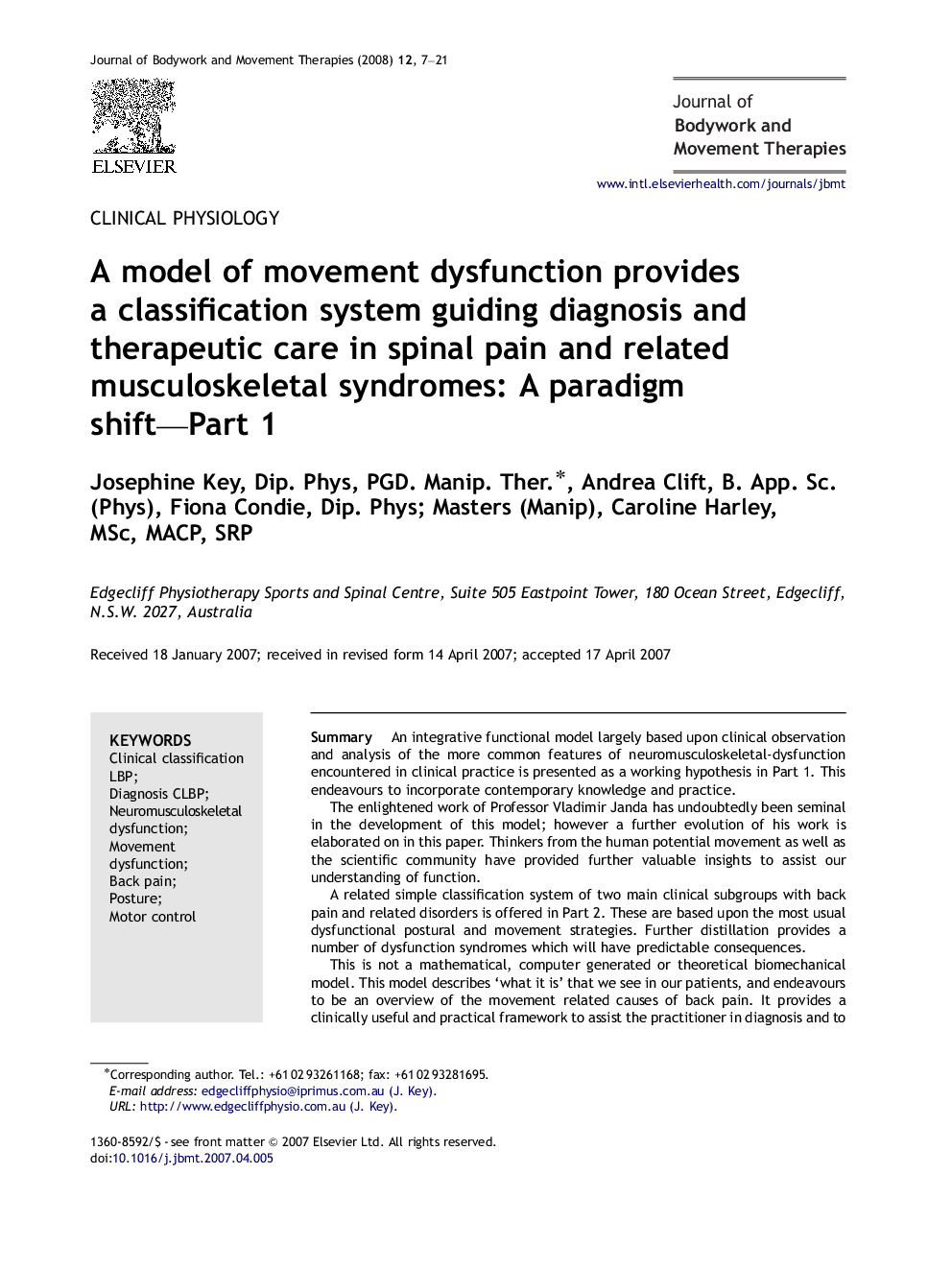| Article ID | Journal | Published Year | Pages | File Type |
|---|---|---|---|---|
| 2619609 | Journal of Bodywork and Movement Therapies | 2008 | 15 Pages |
SummaryAn integrative functional model largely based upon clinical observation and analysis of the more common features of neuromusculoskeletal-dysfunction encountered in clinical practice is presented as a working hypothesis in Part 1. This endeavours to incorporate contemporary knowledge and practice.The enlightened work of Professor Vladimir Janda has undoubtedly been seminal in the development of this model; however a further evolution of his work is elaborated on in this paper. Thinkers from the human potential movement as well as the scientific community have provided further valuable insights to assist our understanding of function.A related simple classification system of two main clinical subgroups with back pain and related disorders is offered in Part 2. These are based upon the most usual dysfunctional postural and movement strategies. Further distillation provides a number of dysfunction syndromes which will have predictable consequences.This is not a mathematical, computer generated or theoretical biomechanical model. This model describes ‘what it is’ that we see in our patients, and endeavours to be an overview of the movement related causes of back pain. It provides a clinically useful and practical framework to assist the practitioner in diagnosis and to better understand the development and perpetuation of most spinal pain and related disorders. In so doing, more rational, functional and effective manual and exercise therapy interventions can ensue.
